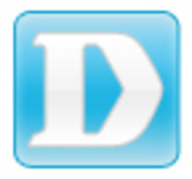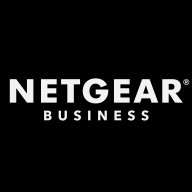

D-Link and NETGEAR Ethernet switches are key players in the networking category, offering products that cater to various market segments. NETGEAR seems to have the upper hand with its advanced cloud management capabilities and broader set of features enhancing deployment flexibility.
Features: NETGEAR switches provide cloud-based remote management, support PoE and IGMP snooping, and offer Insight Pro licensing for service providers. D-Link switches are cost-effective, with VLAN and QoS features, and offer robust security with energy-saving green technology.
Room for Improvement: D-Link could improve in advanced network management and cloud integration while addressing stability issues. NETGEAR requires enhancements in security features, centralized monitoring, and more consistent performance, especially in throughput and stability.
Ease of Deployment and Customer Service: D-Link switches are simple to deploy with basic plug-and-play functionality but require quicker customer support. NETGEAR offers straightforward deployment through remote management tools, despite some users experiencing long wait times for technical support.
Pricing and ROI: D-Link is attractive to small and medium-sized businesses due to competitive pricing, providing good ROI. NETGEAR, while slightly more expensive, offers a commendable price-to-performance ratio, especially for advanced features, making it valuable for managed service providers.
We have implemented these switches in 25 to 30 sites without significant problems.
Whenever there is an issue, the local technical team supports us, whether through physical presence or remotely.
There are issues distinguishing which switches support cloud features.
The pricing is competitive in the market, making D-Link Ethernet switches a good option for both middle-end and high-end brands.
There is not much scalability.
The scalability of NETGEAR Switches is easy and very beneficial for us.
NETGEAR's scalability through its Insight Cloud system is on par with Ubiquiti's, although it must offer features beyond its competitors.
The integration has been successful with no security breaches or network disturbances.
There are no stability issues with D-Link Ethernet switches.
The stability of D-Link Ethernet Switches is good.
We've experienced failures such as a 16-port dying after three to four years.
Improvements in the voltage facility, like increasing from 360 watts to 400 or 450 watts, would make them more competitive with other vendors.
Currently, D-Link Ethernet Switches are often not used in large data centers due to issues with performance and scalability.
The products I'm dealing with are just plug-and-play, unmanaged switches.
They should introduce features like dual firmware or dual boot that allow systems to be updated without downtime.
They can improve on the commercial part, specifically the cost, as it is higher than other brands.
The pricing of D-Link Ethernet Switches is cost-effective.
High-end switches should be slightly cheaper.
D-Link Ethernet Switches are 30% cheaper than Cisco switches.
Some high-end switches required for specific advanced features, like precision time protocols, can be more expensive.
The features of D-Link Ethernet Switches that have proven most beneficial in managing network traffic include their cost-effectiveness, which is suitable for small data centers.
I haven't found any problem implementing those in a live environment; it's just a plug-and-play device.
It's especially valuable because Cisco and other products function similarly, but for smaller networks where high transfer rates aren't necessary.
The precision time protocol feature caught our interest for future use in specific settings like churches, where low latency is required.
The most valuable features are routing and access control.
| Product | Market Share (%) |
|---|---|
| NETGEAR Switches | 8.0% |
| D-Link Ethernet Switches | 4.7% |
| Other | 87.3% |


| Company Size | Count |
|---|---|
| Small Business | 18 |
| Midsize Enterprise | 6 |
| Large Enterprise | 7 |
| Company Size | Count |
|---|---|
| Small Business | 41 |
| Midsize Enterprise | 4 |
| Large Enterprise | 11 |
NETGEAR Ethernet Switches is an Ethernet solution that offers businesses of all sizes the ability to easily set up secure and highly scalable networks. Small to medium-sized companies have the option to choose from three different switching options. The three options that are most appropriate for businesses of this size are the NETGEAR Unmanaged, Plus, and Smart Switch solutions. If you're managing a large enterprise network or a campus network, then NETGEAR Fully Managed Infrastructures is the solution for you. All the NETGEAR Ethernet Switches and solutions are innovative, easy to install and use, reliable, and very cost-effective.
NETGEAR Ethernet Switches have many features that make them a most effective product. Included in these is the ability to virtually stack IP addresses in such a way that users can scale their network up with ease. These IP addresses are grouped together. Once additional data ports are connected, you have only a single switch to manage and you gain both a much higher level availability of data and a greater level of network resilience.
Benefits of NETGEAR Ethernet Switches
Some of the benefits of using NETGEAR Ethernet Switches include:
Reviews from Real Users
There are a number of characteristics that make NETGEAR Ethernet Switches extremely effective. Two major ones are its inherent flexibility and its user-friendly nature.
PeerSpot user Kevin W., a network delivery architect at a tech-services company, notes that NETGEAR Ethernet Switches gives users the ability to tailor the switches to fit their needs. He writes, "The big winner for NETGEAR is their modular switch: the 96X version. That is something that you don't see in the market anywhere else, except for Cisco who has it at a high level for a high expense. The ability to customize your own switch with their modules is a big plus for what we do in the market right now. Instead of having to piece together standardized switches, trying to make something work, or fitting the design into the mold, the modular switches are aware that you can make a mark in the industry because you purchased one switch and design with different modules added and removed later on for functionality."
PeerSpot user Chris W., a system engineer at Diversified, notes just how easy they are to use when he writes, "The ease of use of these switches is very good because of the Cisco CLI. If you are familiar with CLI, then you can configure the switch that way. It also has a relatively straightforward web interface. Using the web interface is good for beginners or people who aren't familiar with Cisco CLI. However, having a common command line interface method is great for some of our more advanced guys who are familiar with it."
We monitor all Ethernet Switches reviews to prevent fraudulent reviews and keep review quality high. We do not post reviews by company employees or direct competitors. We validate each review for authenticity via cross-reference with LinkedIn, and personal follow-up with the reviewer when necessary.